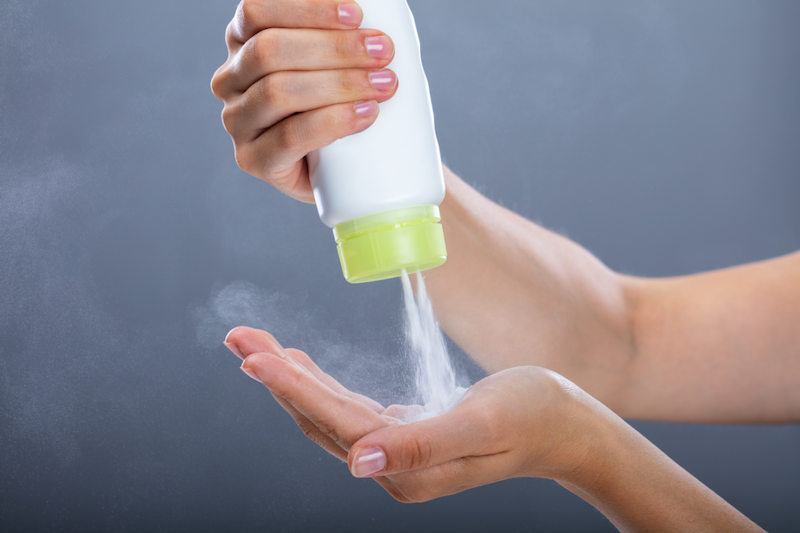My baby has drool rash under his chin. My mom said putting some baby powder there might help, but that “no one uses it anymore.” I looked it up, and the AAP doesn’t recommend using it. I know that baby powder with talc is dangerous. But when I’m researching alternatives, people say that even talc-free baby powder is also bad because the baby can potentially inhale it. How likely is it for that to occur? Is there any data for talc-free baby powder?
— Emily
The AAP takes a strong stand against talcum-containing baby powder due to the risk of inhalation. This risk isn’t theoretical — talcum powder poisoning does occur, and inhalation can cause both acute and chronic issues for infants.

There are baby powders without talcum, which would pose an inhalation risk but potentially less of a poisoning one. However, this is not a good treatment for drool rash (or any other rash). The biggest issue with this advice is that it just will not work. It could actually make things worse.
Generally, for rashes and eczema, you want to go with a lotion or some form of diaper rash cream. Aquaphor or Vaseline are good options for treating this. It’s also worth noting: if the rash is mild and isn’t bothering your baby, you probably do not need to do anything about it.
Community Guidelines
















Log in
Does the article here match the title? I see a title on baby powder but an article about menstruation
Thanks for flagging, Jason — we are fixing this!